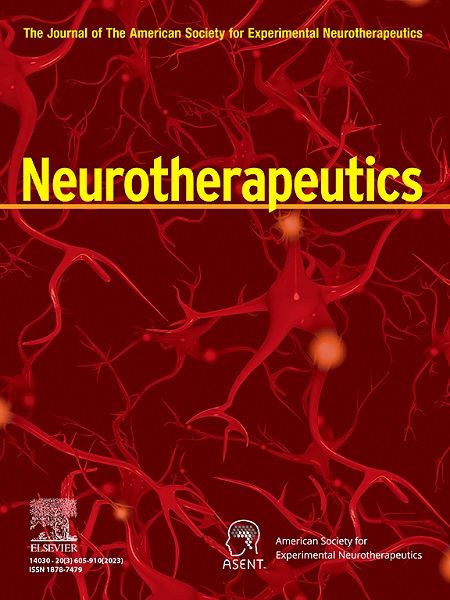从代谢到心智:GLP-1受体在神经治疗中的扩展作用。
IF 6.9
2区 医学
Q1 CLINICAL NEUROLOGY
引用次数: 0
摘要
GLP-1受体激动剂(GLP-1RAs)最初被批准用于糖尿病和肥胖症,目前正在研究其在一系列神经系统疾病中的神经保护作用。这些药物的受体广泛表达于大脑中与认知和代谢有关的区域,调节神经递质释放,促进神经发生。虽然临床前研究一致证明在阿尔茨海默病、帕金森病、多发性硬化症和肌萎缩性侧索硬化症(ALS)模型中的益处,但临床试验结果一直是可变的,主要是由于研究人群和试验设计的异质性。较新的药物,如NLY01和替西帕肽,正在开发中,以增强中枢神经系统的渗透和疗效。虽然GLP-1RAs在代谢条件下通常是安全的,但它们在神经系统疾病中的应用需要仔细监测和患者选择。未来的发展方向包括开发可靠的生物标志物,实施精准医学策略,探索使用联合疗法以最大限度地发挥治疗潜力。本文章由计算机程序翻译,如有差异,请以英文原文为准。

From metabolism to mind: The expanding role of the GLP-1 receptor in neurotherapeutics
GLP-1 receptor agonists (GLP-1RAs), initially approved for diabetes and obesity, are now under investigation for neuroprotective effects in a range of neurological disorders. These agents, whose receptors are widely expressed in brain regions involved in cognition and metabolism, modulate neurotransmitter release and promote neurogenesis. While preclinical studies consistently demonstrate benefits in models of Alzheimer's disease, Parkinson's disease, multiple sclerosis, and amyotrophic lateral sclerosis (ALS), clinical trial outcomes have been variable, largely owing to heterogeneity in study populations and trial design. Newer agents, such as NLY01 and tirzepatide, are under development to enhance central nervous system penetration and efficacy. Although GLP-1RAs are generally safe in metabolic conditions, their use in neurological diseases requires careful monitoring and patient selection. Future directions include developing reliable biomarkers, implementing precision medicine strategies, and exploring the use of combination therapies to maximize therapeutic potential.
求助全文
通过发布文献求助,成功后即可免费获取论文全文。
去求助
来源期刊

Neurotherapeutics
医学-神经科学
CiteScore
11.00
自引率
3.50%
发文量
154
审稿时长
6-12 weeks
期刊介绍:
Neurotherapeutics® is the journal of the American Society for Experimental Neurotherapeutics (ASENT). Each issue provides critical reviews of an important topic relating to the treatment of neurological disorders written by international authorities.
The Journal also publishes original research articles in translational neuroscience including descriptions of cutting edge therapies that cross disciplinary lines and represent important contributions to neurotherapeutics for medical practitioners and other researchers in the field.
Neurotherapeutics ® delivers a multidisciplinary perspective on the frontiers of translational neuroscience, provides perspectives on current research and practice, and covers social and ethical as well as scientific issues.
 求助内容:
求助内容: 应助结果提醒方式:
应助结果提醒方式:


